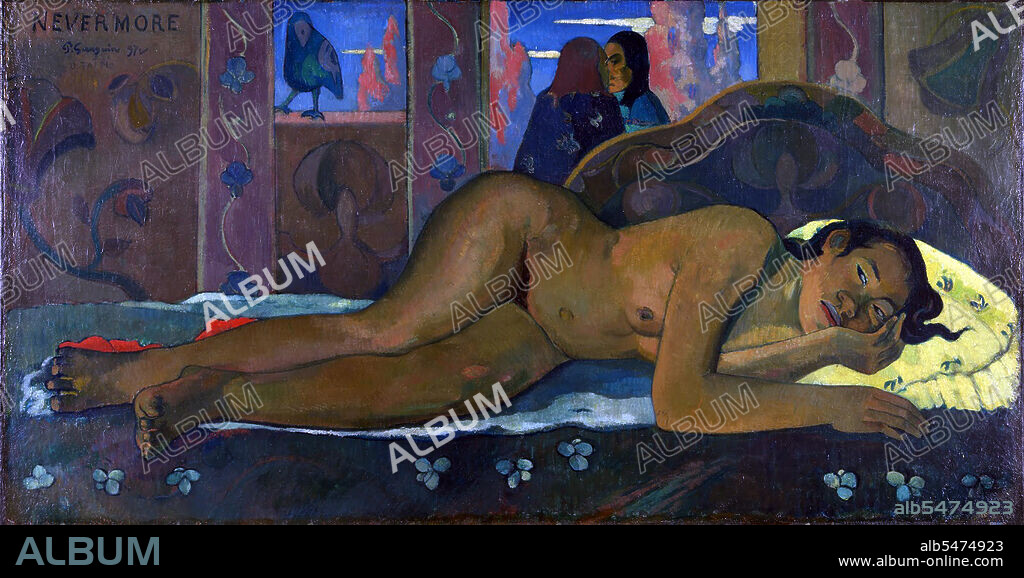alb5474923
Tahiti: 'Nevermore', Paul Gauguin (1897)

|
Add to another lightbox |
|
Add to another lightbox |



Buy this image.
Select the use:

Title:
Tahiti: 'Nevermore', Paul Gauguin (1897)
Caption:
Nevermore is the most celebrated all of Gauguin’s Tahitian nudes, showing a fearful girl, turning away from what she believes to be a spirit, embodied in the raven on the windowsill. The raven and the picture’s title are direct references to the poem by Edgar Allan Poe, with its sinister refrain ‘Quoth the Raven, “Nevermore”.’ Paul Gauguin was born in Paris in 1848 and spent some of his childhood in Peru. He worked as a stockbroker with little success, and suffered from bouts of severe depression. He also painted. In 1891, Gauguin, frustrated by lack of recognition at home and financially destitute, sailed to the tropics to escape European civilization and 'everything that is artificial and conventional'. His time there, particularly in Tahiti and the Marquesas Islands, was the subject of much interest both then and in modern times due to his alleged sexual exploits. He was known to have had trysts with several native girls, some of whom appear as subjects of his paintings. Gauguin died on 8 May 1903 and is buried in Calvary Cemetery (Cimetière Calvaire), Atuona, Hiva ‘Oa, Marquesas Islands, French Polynesia.
Credit:
Album / Pictures From History/Universal Images Group
Releases:
Image size:
5800 x 2976 px | 49.4 MB
Print size:
49.1 x 25.2 cm | 19.3 x 9.9 in (300 dpi)
Keywords:
ART • ARTS • ASIA IMAGE • ASIA PICTURES • ASIA • ASIAN IMAGES • ASIAN PICTURES • ASIAN • FEMALES • FRENCH POLYNESIA • GAUGUIN, PAUL • GHOST • HISTORIA UNIVERSAL • HISTORIA • HISTORICAL IMAGES • HISTORICAL PICTURES • HISTORICAL • HISTORY IMAGES • HISTORY PICTURES • HISTORY • HISTORY. • LEGEND • MUJER • MUJERES • PACIFIC • PAINT • PAINTING • PAINTINGS • POLYNESIA • POLYNESIAN FOLK ART • POLYNESIAN • POYNESIAN • SOUTH PACIFIC • SUPERSTITION • TAHITI • TAHITIAN • WOMAN WOMEN • WOMAN'S • WOMAN • WOMAN. • WOMANS • WOMEN'S • WOMEN • WOMENS
 Pinterest
Pinterest Twitter
Twitter Facebook
Facebook Copy link
Copy link Email
Email
